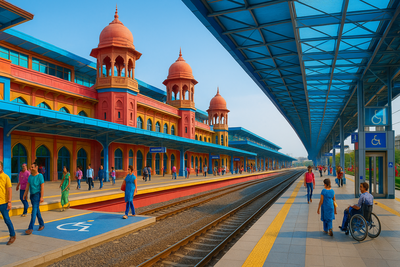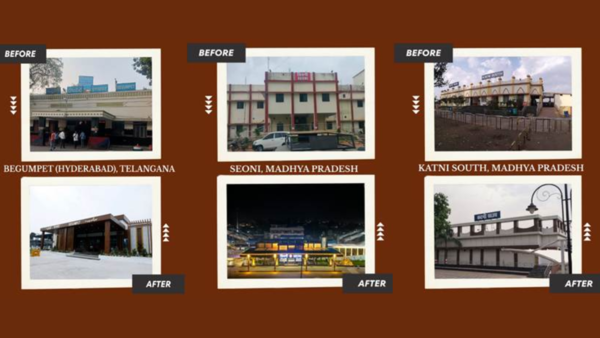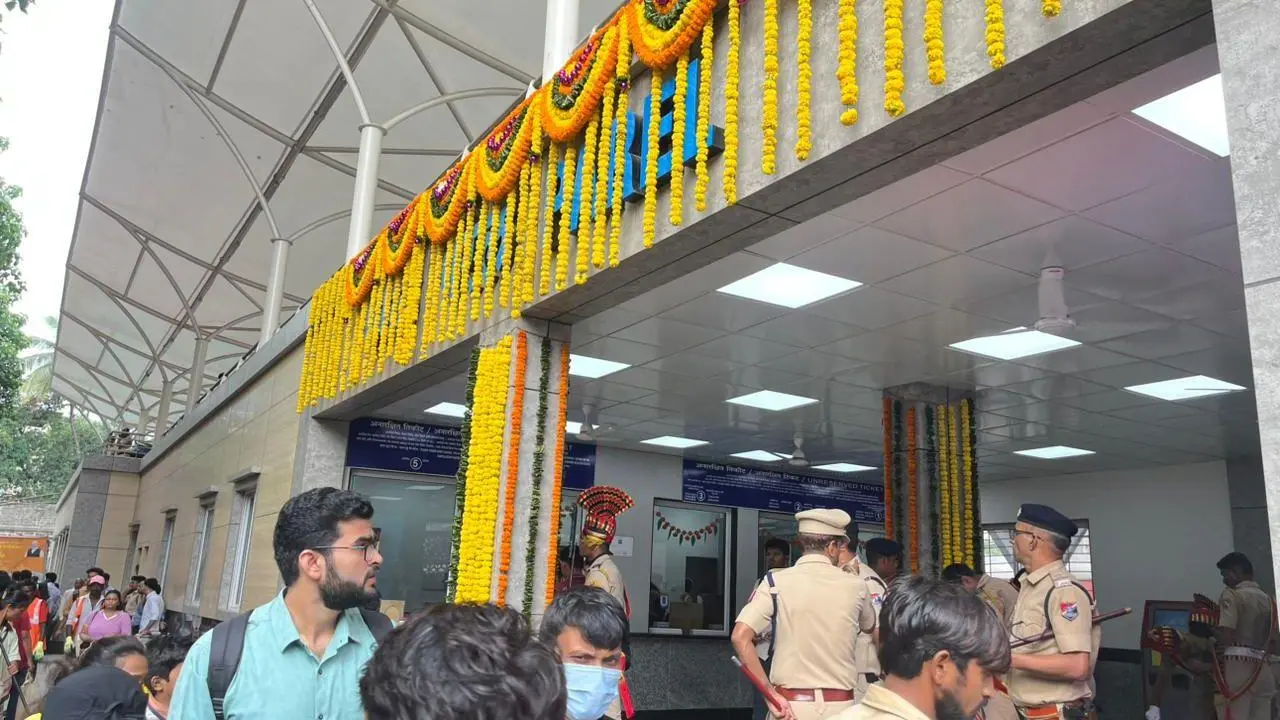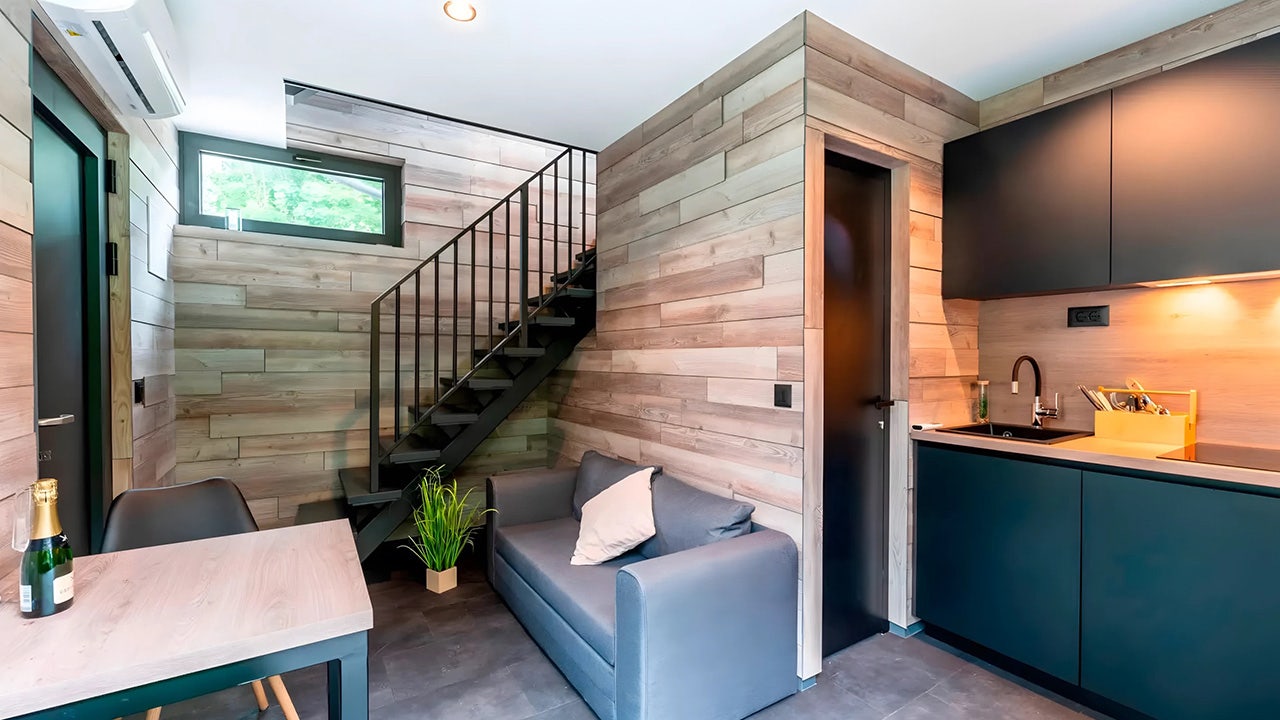What is Amrit Bharat station scheme? PM Modi inaugurates 103 redeveloped railway stations - top facts for passengers

Prime Minister Narendra Modi inaugurated as many as 103 newly redeveloped railway stations under the Indian Railways’ ambitious Amrit Bharat Station Scheme. The initiative is a part of the government’s efforts to modernise railway infrastructure across the country, with a focus on comfort, cleanliness, and connectivity.Here is all that you need to know about the scheme and how it will boost your passenger experience:
The Amrit Bharat Station Scheme is a nationwide project aimed at revamping railway stations in step by step manner. Each station is given a customised plan based on its specific needs, with improvements rolled out over time. The goal is to gradually elevate stations to modern standards while preserving their regional character.By making stations more functional, beautiful, and accessible, the scheme hopes to redefine India’s rail travel experience while boosting local economies and urban development.
Passengers can expect a significant upgrade in comfort and convenience. Key improvements include:
Many stations will also feature executive lounges and dedicated areas for business meetings. The “One Station One Product” initiative will promote local crafts and products through kiosks within the station premises.
The scheme also includes beautification efforts, with more greenery and thoughtful design to enhance the look and feel of the stations.

The scheme goes beyond cosmetic upgrades. Station buildings are being modernised and designed to connect both sides of the city, making them important urban hubs. Improvements include:
The scheme aims to make these stations more than just places to catch a train, transforming them into vibrant community spaces that are shaped by the unique character of the region.
Each redevelopment will draw inspiration from local culture, heritage, and architecture, making every station a gateway to the region’s identity.For instance Ahmedabad’s station from the grandeur of the Modhera Sun Temple, Dwarka station will feature design elements inspired by the Dwarkadheesh Temple. In the east, Odisha’s Baleshwar station will carry Jagannath Temple’s essence while in the south, Kumbakonam station will showcase traditional Chola architecture.
Gurugram station will embrace a modern look, reflecting its status as an IT hub.
India Begins Global Outreach Against Terror, Pakistan | All-Party Delegations Reach Japan, UAE
This initiative is designed to promote India’s rich tradition of local crafts and produce. Kiosks will showcase and sell items unique to the region, including handlooms and handicrafts, tribal artefacts, embroidered textiles such as chikankari and zari-zardozi and locally grown spices, tea, coffee, and other food products.These stalls will not only give travellers a taste of the region’s heritage but also support local artisans and small businesses.
As part of the government’s Sugamya Bharat Mission, Indian railways is working to ensure that stations are accessible to all, including persons with disabilities (Divyangjans) and passengers with reduced mobility.The accessibility guidelines include a wide range of features such as:
A detailed set of accessibility guidelines has been developed to make train stations and services more inclusive for people with disabilities (Divyangjans) and passengers with limited mobility.
These guidelines cover five key areas: information systems, station facilities such as toilets, drinking water booths, lifts, subways, lighting, and platform design; train coach design both inside and out, including seating arrangements; and a monitoring and feedback system to ensure continuous improvement. The roots of the Amrit Bharat Station Scheme date back to 2021, when Gandhinagar in Gujarat became the first railway station in India to be modernised under the initiative. The revamped station was equipped with state-of-the-art facilities, including a five-star hotel built within the premises, a first for Indian Railways. Later that same year, Bhopal’s Habibganj station was transformed and renamed Rani Kamalapati Station, setting another example of modern, passenger-friendly infrastructure.
You may also like...
Diddy's Legal Troubles & Racketeering Trial

Music mogul Sean 'Diddy' Combs was acquitted of sex trafficking and racketeering charges but convicted on transportation...
Thomas Partey Faces Rape & Sexual Assault Charges

Former Arsenal midfielder Thomas Partey has been formally charged with multiple counts of rape and sexual assault by UK ...
Nigeria Universities Changes Admission Policies

JAMB has clarified its admission policies, rectifying a student's status, reiterating the necessity of its Central Admis...
Ghana's Economic Reforms & Gold Sector Initiatives

Ghana is undertaking a comprehensive economic overhaul with President John Dramani Mahama's 24-Hour Economy and Accelera...
WAFCON 2024 African Women's Football Tournament

The 2024 Women's Africa Cup of Nations opened with thrilling matches, seeing Nigeria's Super Falcons secure a dominant 3...
Emergence & Dynamics of Nigeria's ADC Coalition

A new opposition coalition, led by the African Democratic Congress (ADC), is emerging to challenge President Bola Ahmed ...
Demise of Olubadan of Ibadanland
Oba Owolabi Olakulehin, the 43rd Olubadan of Ibadanland, has died at 90, concluding a life of distinguished service in t...
Death of Nigerian Goalkeeping Legend Peter Rufai

Nigerian football mourns the death of legendary Super Eagles goalkeeper Peter Rufai, who passed away at 61. Known as 'Do...



